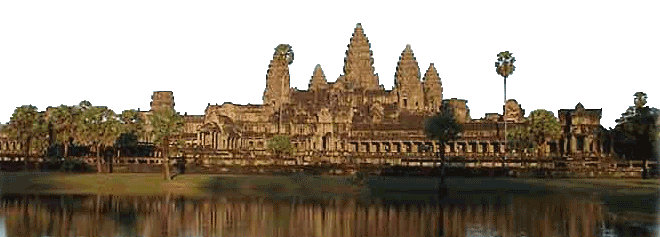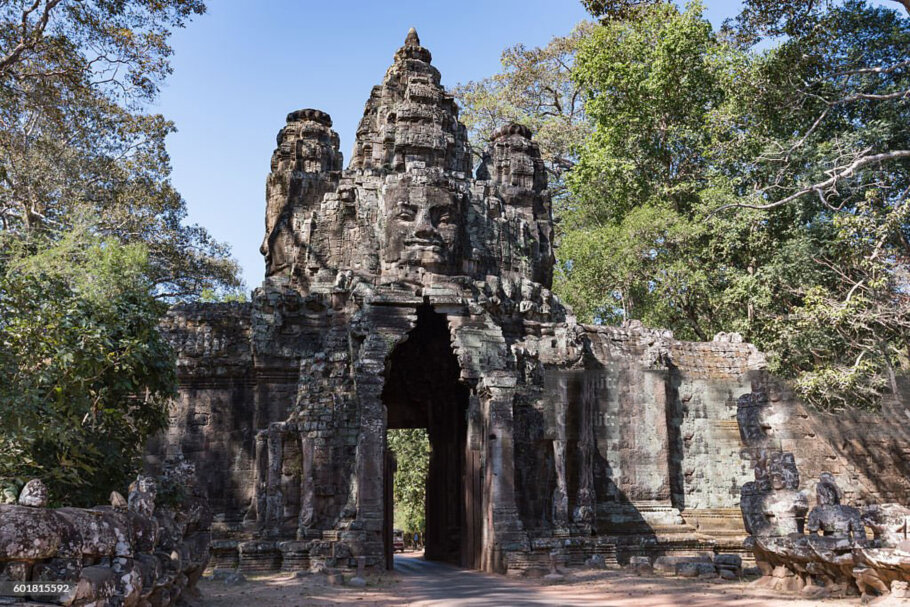Cambodge temple d'Angkor - Victory Gate

Cambodge temple d'Angkor
VICTORY GATE*
Location:
West Entrance of Angkor Thom
Comment:
The Victory Gate is one of the main gates of Angkor Thom, built in the 12th century during the reign of Jayavarman VII. Located to the west of the city, this gate is renowned for its majesty and artistic details.
It is distinguished by an imposing stone structure adorned with intricate carvings and bas-reliefs. At the top, two gigantic figures of devatas (female spirits) or deities, often armed or holding weapons, watch over the entrance. The gate is framed by walls decorated with mythological figures and historical scenes, illustrating military victories or religious legends.
The Victory Gate is not only a monumental entrance but also a symbol of the power and legitimacy of Jayavarman VII, who strengthened the cohesion of his empire after military conquests. The depiction of mythological and divine figures underscores the fusion of earthly and divine power in Khmer culture.
The architecture and sculpture of this gate demonstrate the exceptional artistic craftsmanship of the Angkorian period. The symmetry, fine detail, and rich expression of the figures illustrate the technical mastery and religious art of this period.
Localisation :
Entrée Ouest de Angkor Thom
Commentaire :
La Victory Gate, ou porte de la Victoire, est l'une des portes principales d'Angkor Thom, construite au XIIe siècle sous le règne de Jayavarman VII. Située à l'ouest de la ville, cette porte est célèbre pour sa majesté et ses détails artistiques.
Elle se distingue par une structure imposante en pierre, ornée de sculptures et de bas-reliefs complexes. Au sommet, deux gigantesques figures de dévatas (esprits féminins) ou de divinités, souvent armées ou tenant des armes, veillent sur l’entrée. La porte est encadrée par des murs décorés de figures mythologiques et de scènes historiques, illustrant des victoires militaires ou des légendes religieuses.
La Victory Gate est non seulement une entrée monumentale mais aussi un symbole de la puissance et de la légitimité de Jayavarman VII, qui a renforcé la cohésion de son empire après des conquêtes militaires. La représentation de figures mythologiques et divines souligne la fusion entre pouvoir terrestre et divin dans la culture khmère.
L’architecture et la sculpture de cette porte témoignent du savoir-faire artistique exceptionnel de l’époque angkorienne. La symétrie, la finesse des détails et l’expression riche des personnages illustrent la maîtrise technique et l’art religieux de cette période.



